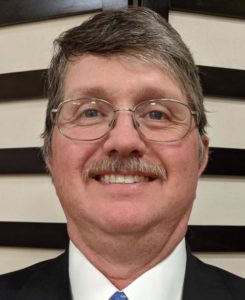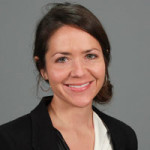Brent Rendel: A Leader in Developing Precision Ag Practices
Editor’s note: Oklahoma farmer Brent Rendel is one of the recipients of the 2019 PrecisionAg Awards of Excellence. Here he shares insight into the history of his farm, his first foray into precision, and his thoughts on the future of technology.

Brent Rendel
Brent Rendel is a man who has been actively involved in farming and ranching his whole life. After graduating from Oklahoma State University with a degree in mechanical engineering in 1986, Rendel went on active duty with the U.S. Navy, retiring with a rank of Commander. He returned to the family farm near Miami, OK in 1997 and has been an active partner of the operation ever since. Rendel Farms has about 3,000 acres of winter wheat, winter canola, corn, grain sorghum, and soybeans.
For more than two decades, Rendel has been a cooperator with OSU extension specialists and researchers. He was the first to bring winter canola into his area as rotational crop, worked with OSU to evaluate using minimum tillage beds on his poorly drained crop ground, and was the earliest adopter and advocate of the N-Rich Strip, GreenSeeker (NDVI), and Sensor-Based Nitrogen Rate Calculator (SBNRC) methodology.
“In fact, adopter is not the best term to use. Developer is more accurate,” says his nominator, Dr. Brian Arnall.
MORE BY JACKIE PUCCI
Michael Ott: Taking Drone Application from the Drawing Board to the Field
“Brent hosted the earliest farm studies and provided feedback on every iteration of sensor and online calculator. He has been a leader in developing technologies and practices via sound science for Oklahoma and the surrounding areas.”
Arnell adds: “Brent never been afraid to share his wins or trials and tribulations. He also never gives up on an idea that has merit.”
PrecisionAg spoke with Rendel about his history on the farm and what drives him.
THE BEGINNING: “My great-grandfather moved to Oklahoma in the late 1800s from the Ohio River Valley. He bought his first ground just outside of Miami, in the far northeastern corner of the state, 5 miles from Kansas and 7 miles from Missouri. This is dryland country; there’s good groundwater but it’s too deep for irrigation. In this part of the world, we’ve got to maximize resources and do everything we can to keep costs in check. I’m not against spending money, as long as the dollar I spent on the crop returns more in the dollar in income. That’s why I started looking at precision ag – it’s all about maximizing return on investment.”
FIRST FORAY INTO PRECISION AGRICULTURE: “In 1996, the opportunity came to put my money on the line in the farm. Around 1998-99 is when I heard about the GreenSeeker that Oklahoma State University had been developing to better manage nitrogen in wheat and other crops. At that time, it was simply a large handheld device with a shoulder strap that you walked around the field. I was really impressed by the results, and with my engineering background, data and numbers speak well to me. It showed me the first year the dollar savings that I could have, so I went all in after that. My father was open-minded, so he embraced it, too. The ultimate thing with engineers is that numbers and data mean more than visuals. I deliberately left check strips in and adopted that system wholeheartedly after three years of testing and it always working in my favor.”
ON THE GOAL OF PRECISION: “Nitrogen is the hardest nutrient of all to manage, in my opinion, and it’s absolutely critical to manage right. Too little, you cost yourself yield; too much, you waste money. When I first started getting into (precision agriculture), I was talking with Bill Raun and Brian Arnall, who were my mentors, as well as Randy Taylor. They used a long-term study that goes back decades looking at the right amount of nitrogen to use in wheat. They came to find out that in some years, zero was the right number, and in some years, 4 or 5 lbs. per bushel of yield goal was the right number. When you average it out, it’s 2 lbs. per bushel of yield goal, and you still hear that.
But when you dig into the numbers, you find out that’s right one-third of the time. Two-thirds of the time it’s wrong. I wanted to be right more than one-third of the time. That’s what attracted me to GreenSeeker and was my whole leaping-off point into the concept of precision ag. Precision ag is not perfect and never will be perfect. The goal is that it’s better than what we’re doing now. So many people are turned off by the lack of perfection: ‘What if it’s wrong?’ But in many cases, a computer is more right than you are.”
ON LOW ADOPTION OF HIGH-ROI TOOLS: “If you put hard numbers to a tool like auto-steer, it has a very low payback in dollars. So why does it have universal adoption? The answer is, as soon as I push that button, my life just got better, and I know it. I feel better, I drive better, my rows are straighter, and I have time to look at my smartphone. When I punch auto-apply on nitrogen using an NDVI system, my life instantly had questions added to it – ‘Am I doing the right thing? Is it too much nitrogen, or not enough?’ A lot of adoption of technology seems to be about how it makes you feel, instead of what it does. That’s a challenge for the entire industry. If I’m running a center pivot, I need a soil moisture probe out in that field. The return on investment is massive, yet the adoption rate of those technologies is very low. It’s improving, but it’s nowhere near where it should be.
We plant about 1,400 acres of corn a year – that’s a lot, but a lot of farmers are bigger and can easily justify higher levels of precision. We just added planter that has ability to variable-rate plant, but it’s hard to cash flow that. The ROI just isn’t there, and at the end of the day, I’m about ROI.”
ON FUTURE TECHNOLOGY: “One that I like is (John Deere) Blue River’s See & Spray. I think that could be a complete game-changer. It helps farmers because it reduces cost of chemicals, and immediately starts paying itself back. I think in eight to 10 years it’s going to become the industry standard. I was talking to one of the guys at the company and said, ‘Even taking the spray off the table, you’re telling me today, you could drive one of my fields and give me a map and tell me what weed species I have mapped across my field?’ He said, ‘Oh yeah, that’s easy.’ Do you understand how valuable that one piece of information is? If the spray piece is hard, give me that piece where I can go across field and map my weeds. I think that’s a really exciting piece of technology.”
Read about all of the 2019 PrecisionAg Awards of Excellence winners.










